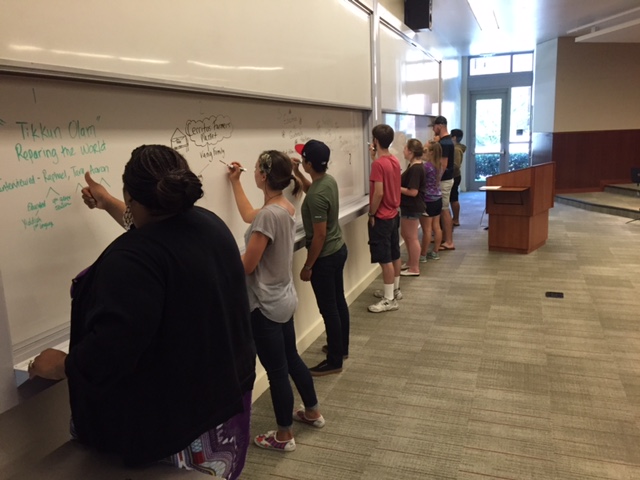
Student journalists take on presidential political coverage in Florida
By Danielle Mendocha
Palm Beach Atlantic University
Donald Trump, Hillary Clinton, Ben Carson and Marco Rubio dropped by the neighborhood the other day along with the national and international press.
Providing news coverage were The New York Times, CNN, a Japanese TV network… and journalists from Palm Beach Atlantic University in West Palm Beach, Fla.
These days PBAU journalism students are covering national politics for the campus press and the nearby Cox daily newspaper and building portfolio credits along the way.
“Student portfolios that include only parking and cafeteria woes aren’t the kind of content that typically impresses an employer,” noted PBAU journalism professor Michael Ray Smith, author of “7 Days to a Byline that Pays.” “The dean suggested that PBA’s journalism program get off campus and cover the news, and what better venue than the U.S. presidential race?’
Continue reading “Christian university takes on national politics”




 There is “not much of a living in hawking that which is given away free” on the Internet, Stephens continues. Because facts, news and information are pouring out on “our laptops, our tablets, our smart phones,” the era when humankind “hungered after information, after facts, after news,” has ended, Stevens argues. And, so, he concludes, we must now train and allow our best journalists to provide “a wise take on what’s going on,” what he aptly calls “wisdom journalism” – journalism that strengthens our understanding of the world.
There is “not much of a living in hawking that which is given away free” on the Internet, Stephens continues. Because facts, news and information are pouring out on “our laptops, our tablets, our smart phones,” the era when humankind “hungered after information, after facts, after news,” has ended, Stevens argues. And, so, he concludes, we must now train and allow our best journalists to provide “a wise take on what’s going on,” what he aptly calls “wisdom journalism” – journalism that strengthens our understanding of the world.
 Abstract: With prior research indicating successful college media programs, as judged against their peers, tend to be housed in academic departments with faculty-level advisors, this study examines how college media outlets are presented, promoted, and used for recruiting within departments and home institutions. How visible are they? Primarily housed in political science, visibility has expanded as a research interest with the advent of social media. For this study, visibility is “organizational behavior to present content communally” (Brunner and Boyer 2008). After examining the top 35 award-winning programs, results indicate low levels not only of presence and visibility, but also self-promotion: college media references are two clicks from department homepage (46%) and 3-4 clicks from university homepage (57%). Media outlets most often post recruitment information (33%). These results suggest a need for growth in promotion, public relations, and associations.
Abstract: With prior research indicating successful college media programs, as judged against their peers, tend to be housed in academic departments with faculty-level advisors, this study examines how college media outlets are presented, promoted, and used for recruiting within departments and home institutions. How visible are they? Primarily housed in political science, visibility has expanded as a research interest with the advent of social media. For this study, visibility is “organizational behavior to present content communally” (Brunner and Boyer 2008). After examining the top 35 award-winning programs, results indicate low levels not only of presence and visibility, but also self-promotion: college media references are two clicks from department homepage (46%) and 3-4 clicks from university homepage (57%). Media outlets most often post recruitment information (33%). These results suggest a need for growth in promotion, public relations, and associations.

 “Why do I need to take a news writing course if I’m studying for a career in marketing?”
“Why do I need to take a news writing course if I’m studying for a career in marketing?”